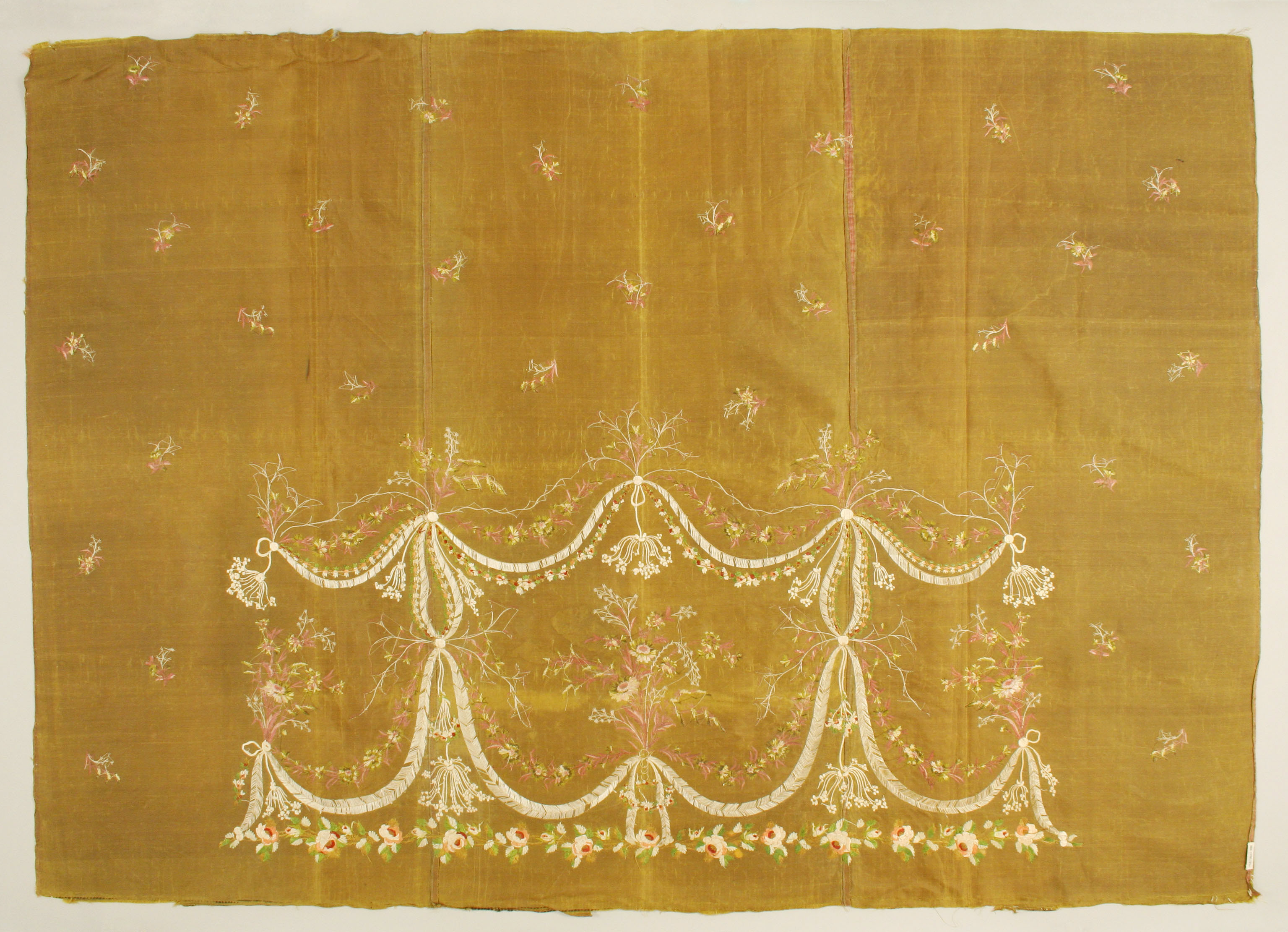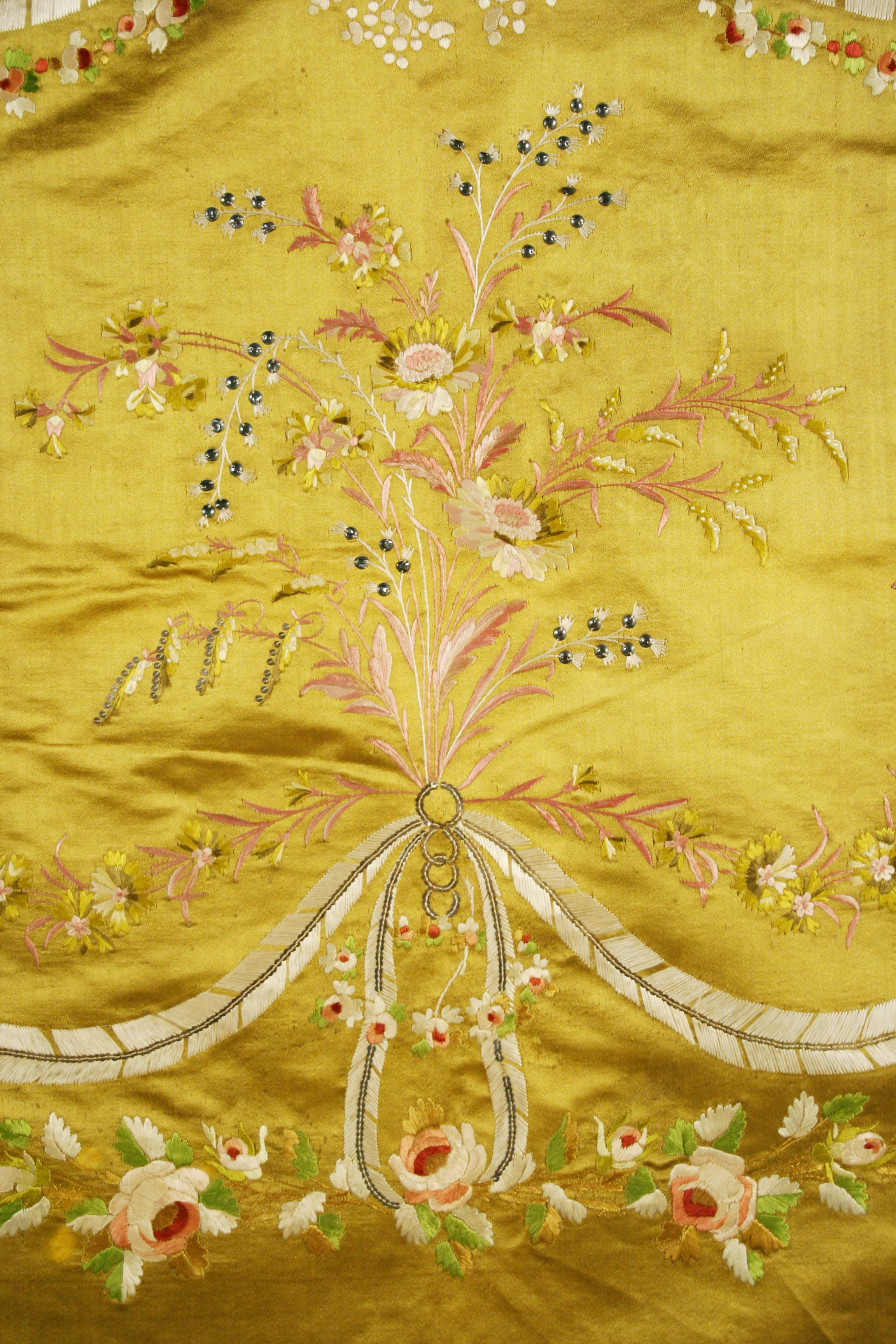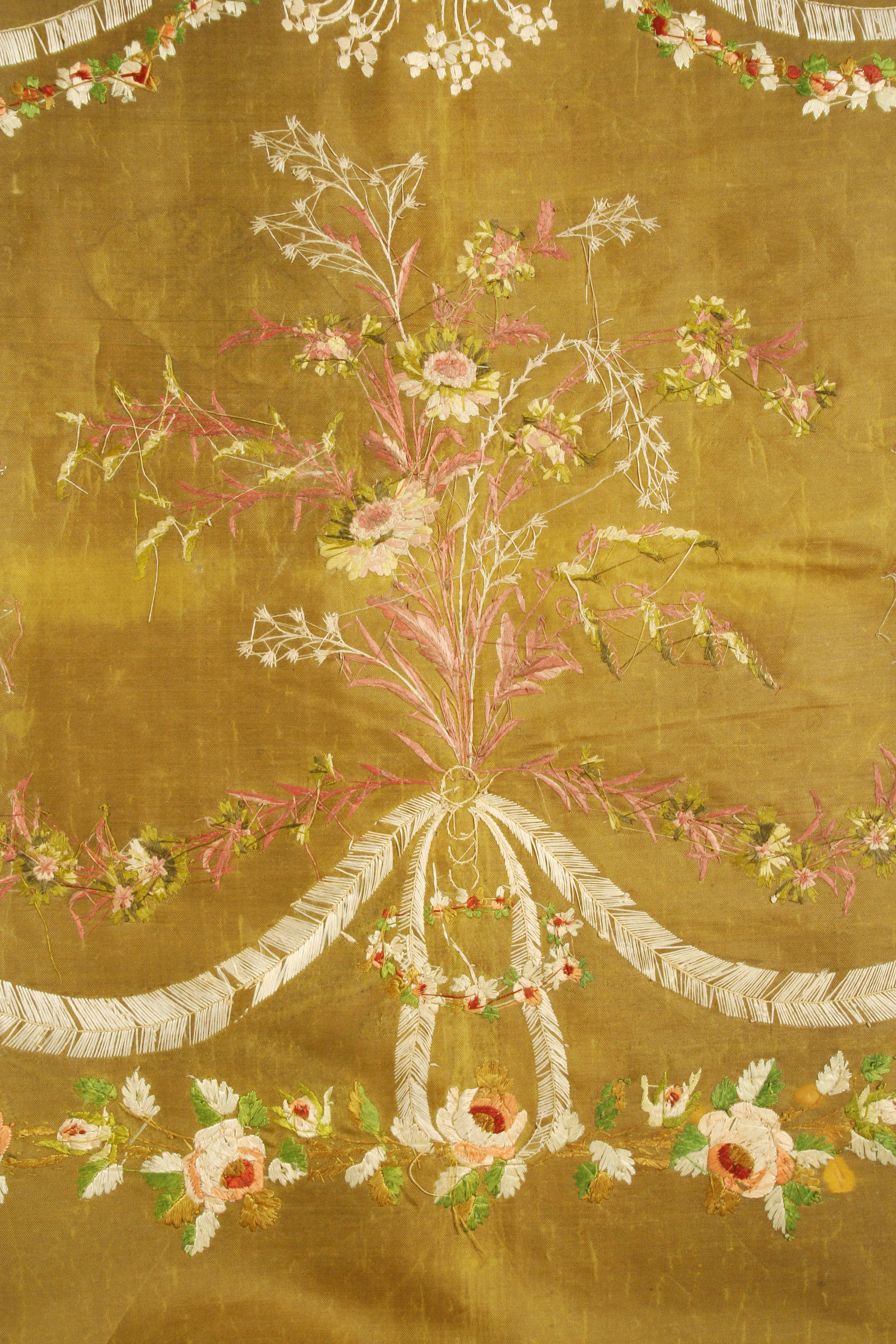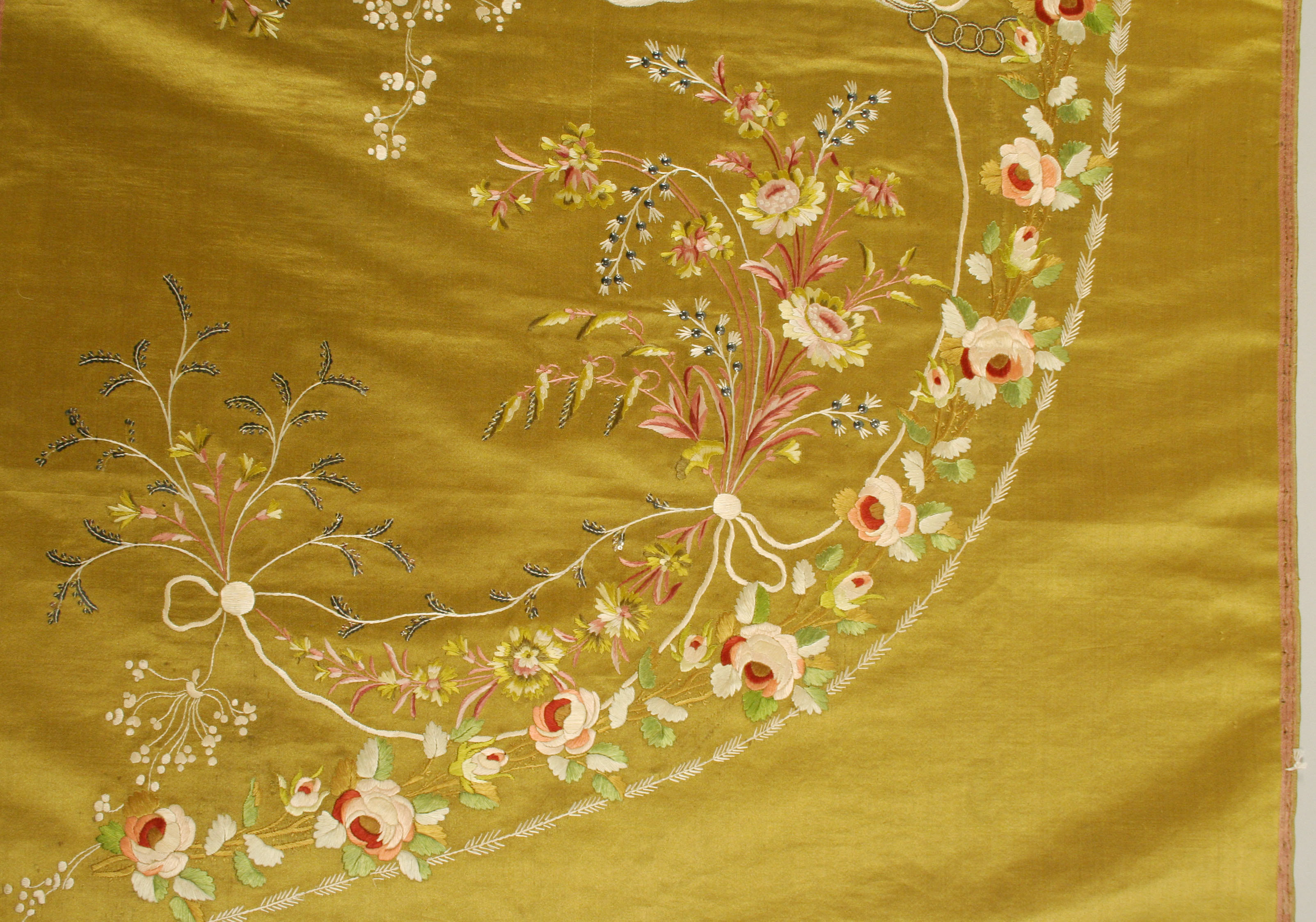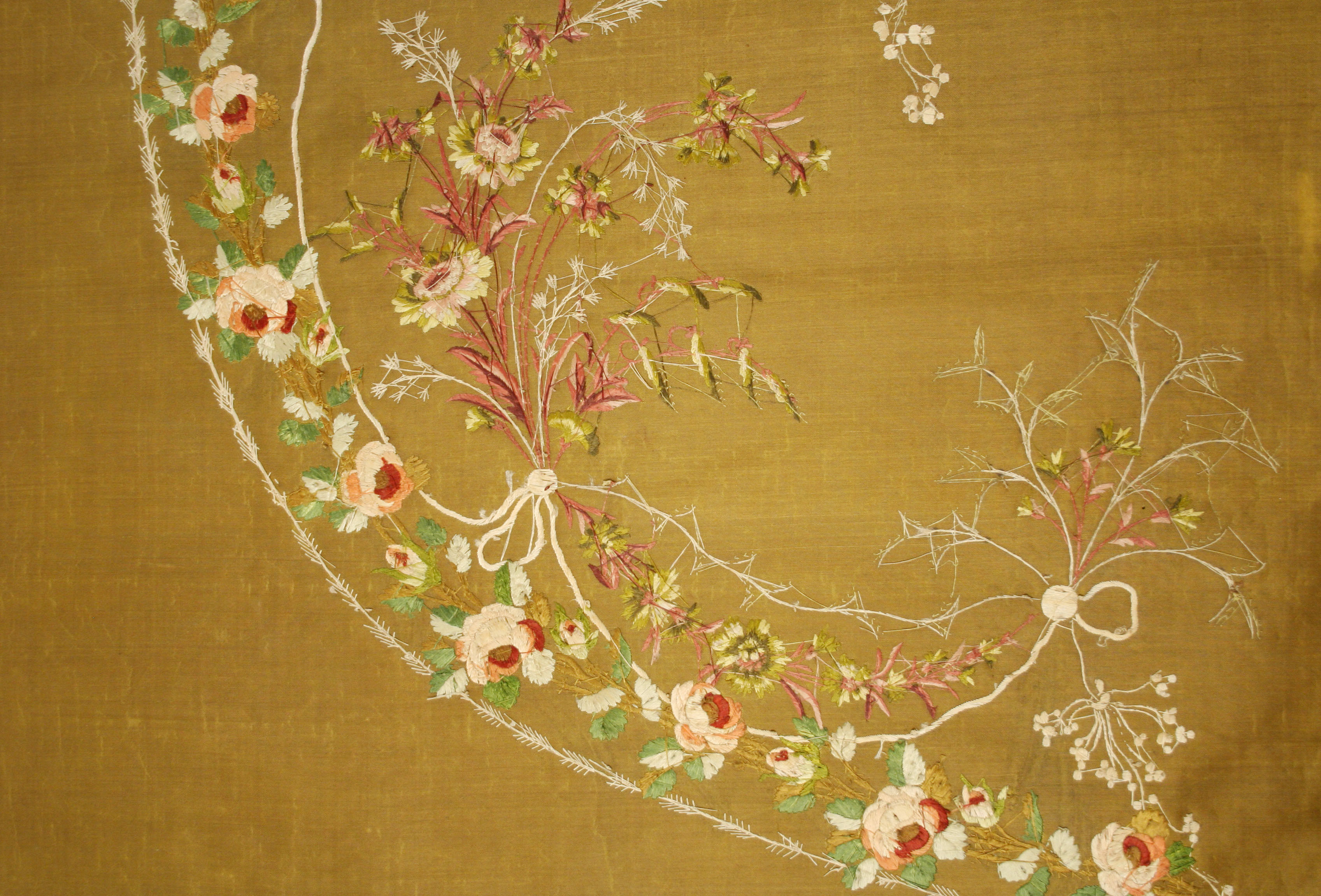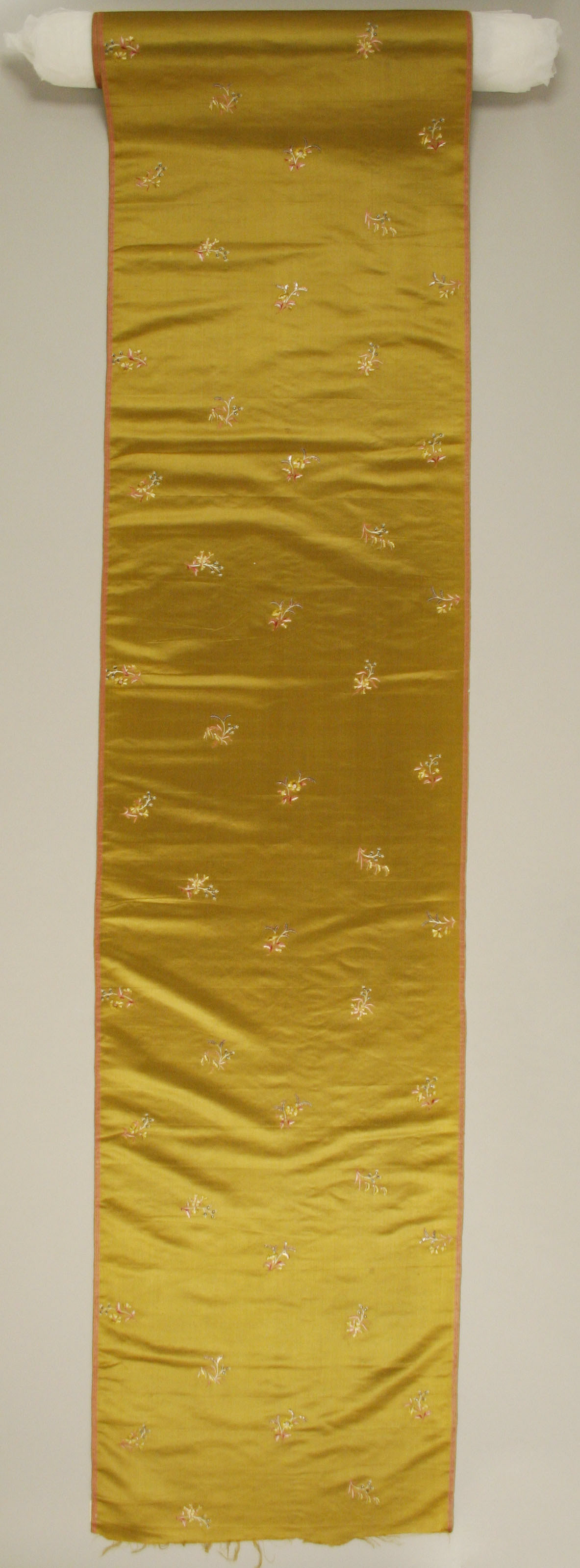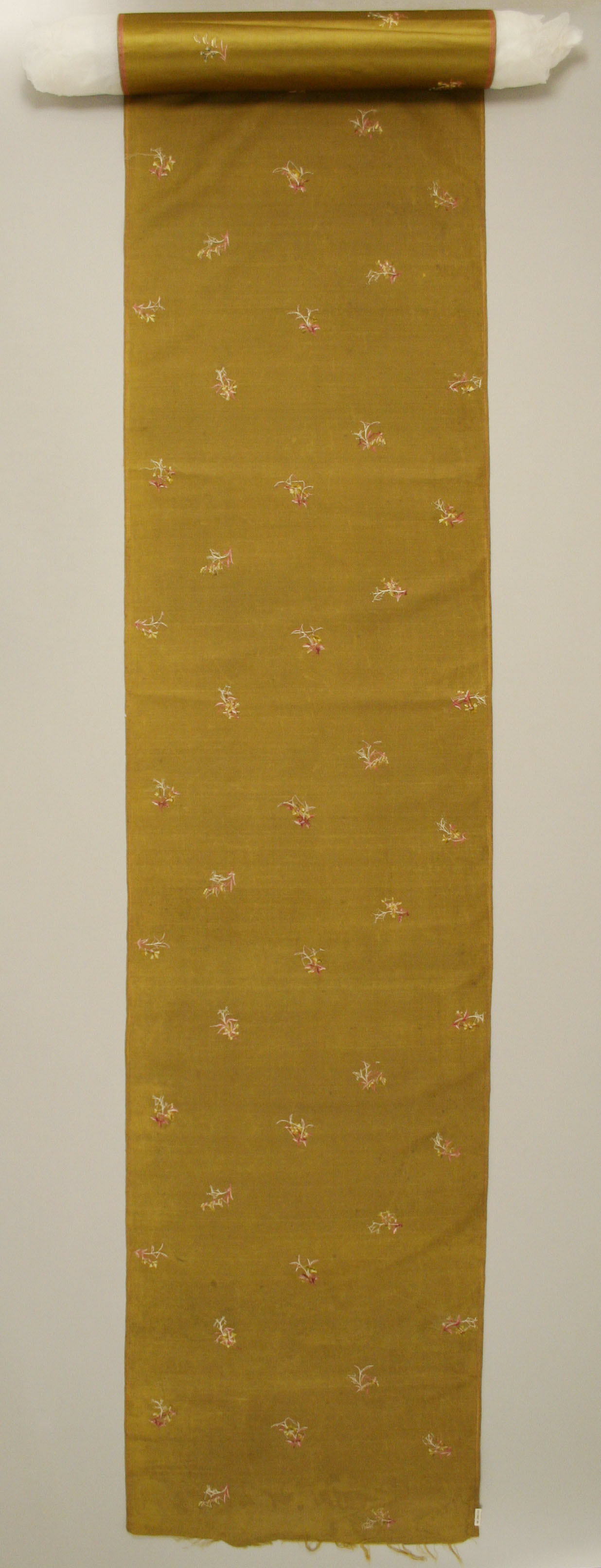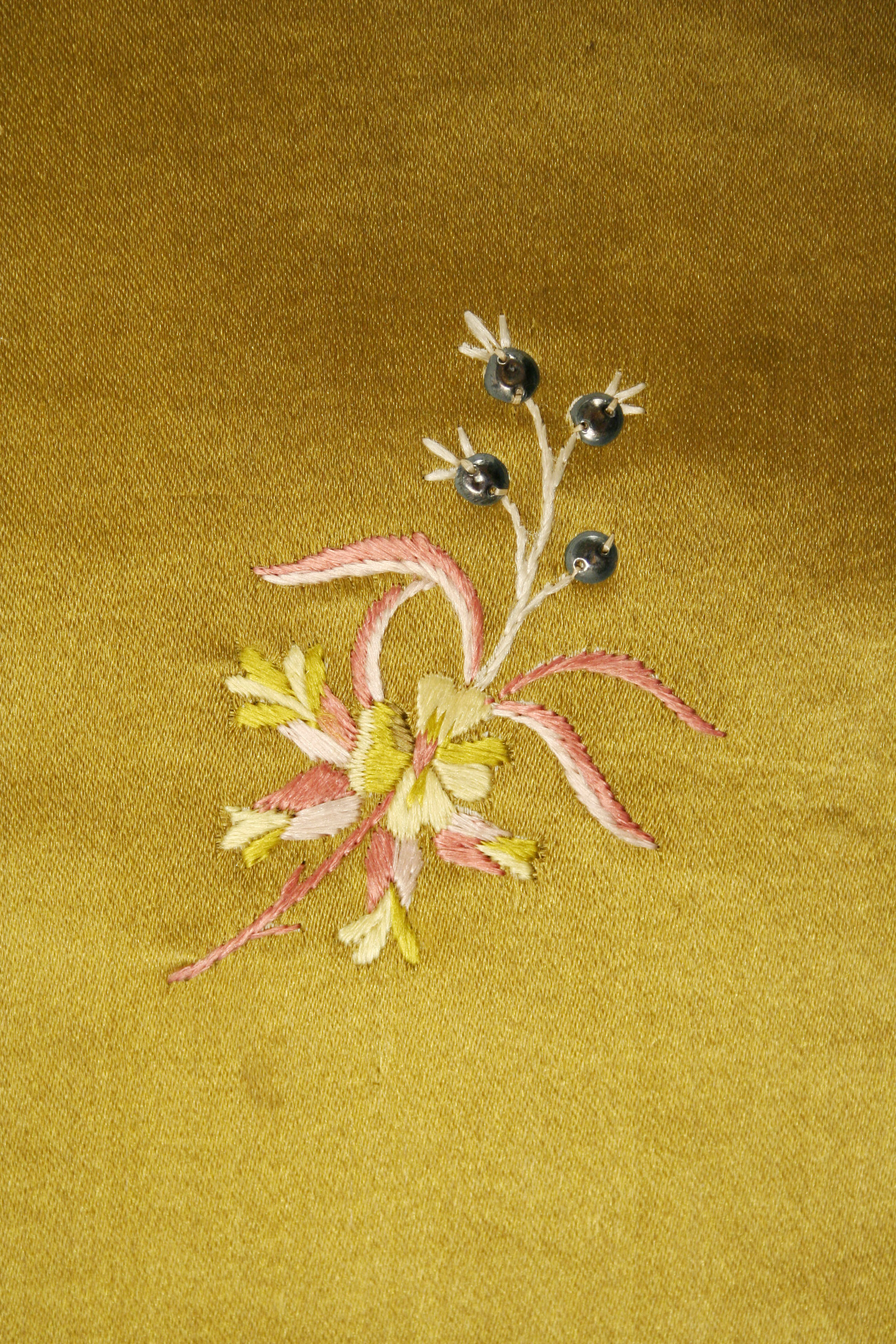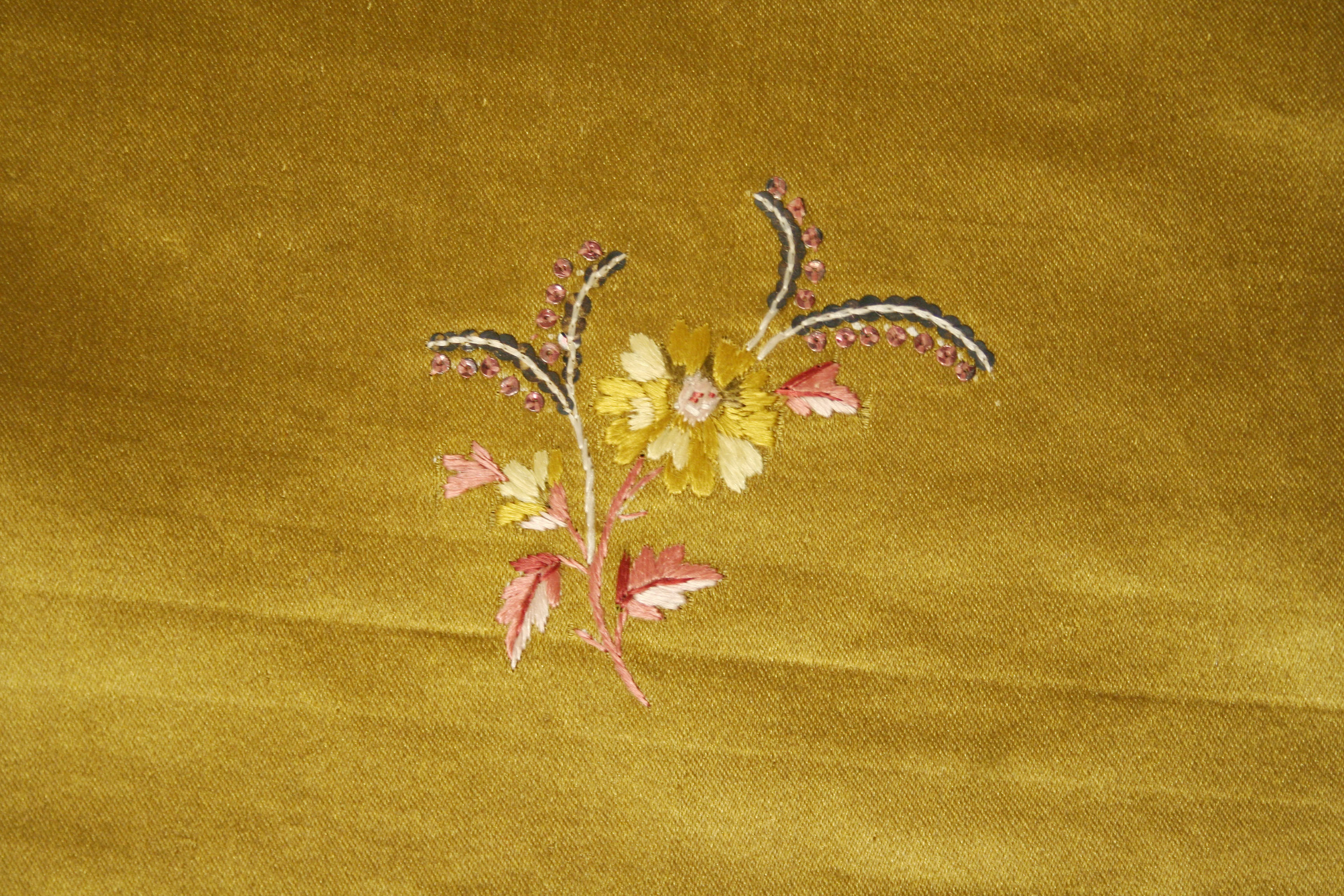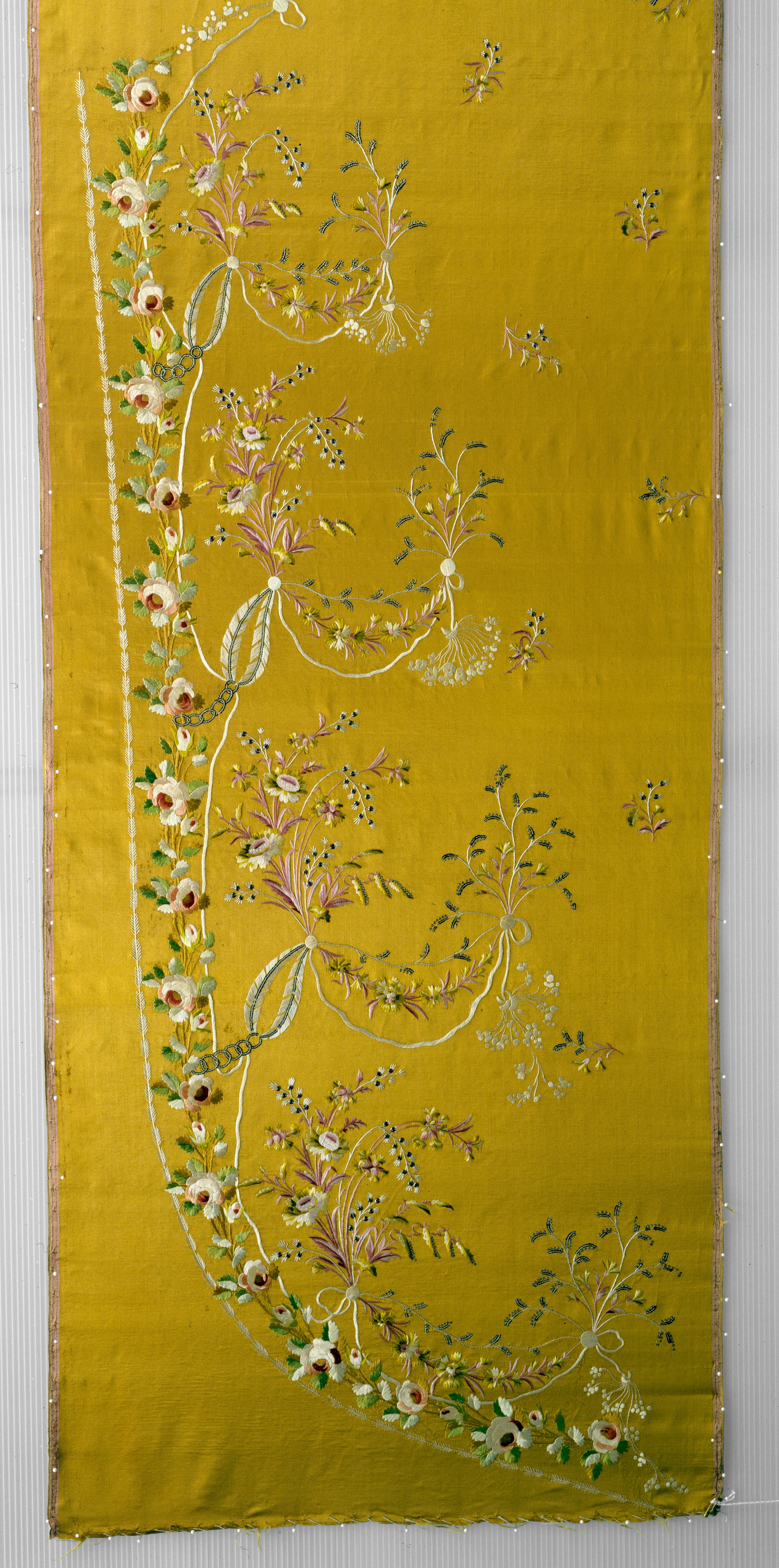Habit à la disposition
Not on view
The shimmering silk has been embroidered à la disposition, that is, following the contours dictated by the projected application, and is ready to be cut and sewn into a gown and petticoat. Two side skirt panels (a detail of one is pictured), a single petticoat panel, and a length of yardage for the skirt back, bodice, and sleeves are all sumptuously worked with silk floss accented by tiny silver sequins to depict meticulously arranged ivory ribbon swags and abstract floral sprays in pinks and greens.
Although clients could specify colors, applied decoration, and styling, more often a dressmaking workshop would provide a variety of already embroidered panels from which the customer could select. Needlework designs, often adapted from pattern books, were transferred to the textile by pouncing, dusting over a pricked cartoon to leave dotted guidelines. The resulting dots were traced with ink for permanence during working.
The open robe and petticoat-heavily embellished with trimmings, a stomacher front panel, and lace accessories-was the dominant form of dress for women in the eighteenth century. Because of the sumptuousness of the silk and the formality of the embroidery, these panels were probably meant for a robe à la française, the expansive and flowing back and skirts of which would be an excellent vehicle for the embroiderer's art.
Due to rights restrictions, this image cannot be enlarged, viewed at full screen, or downloaded.
This artwork is meant to be viewed from right to left. Scroll left to view more.


